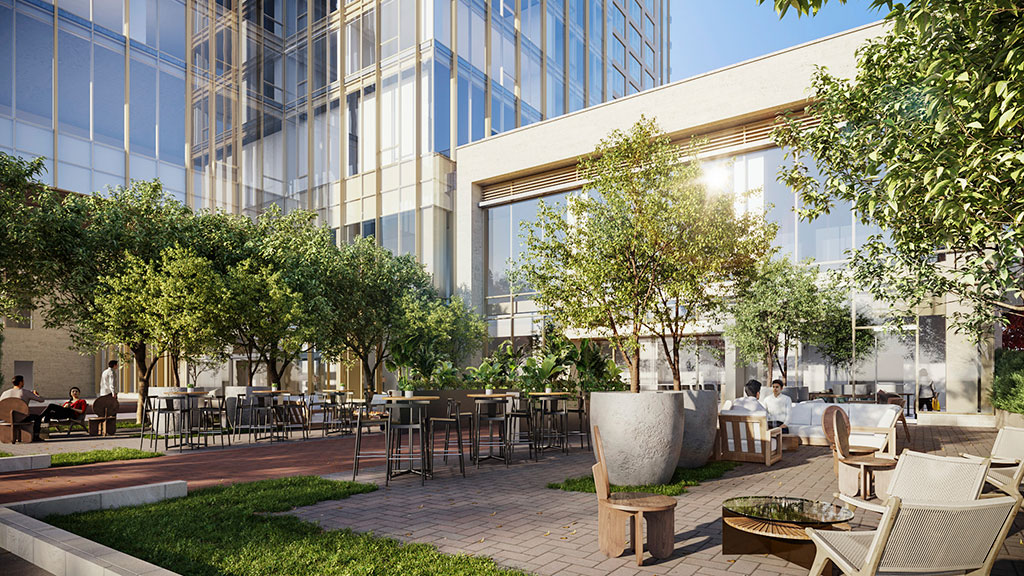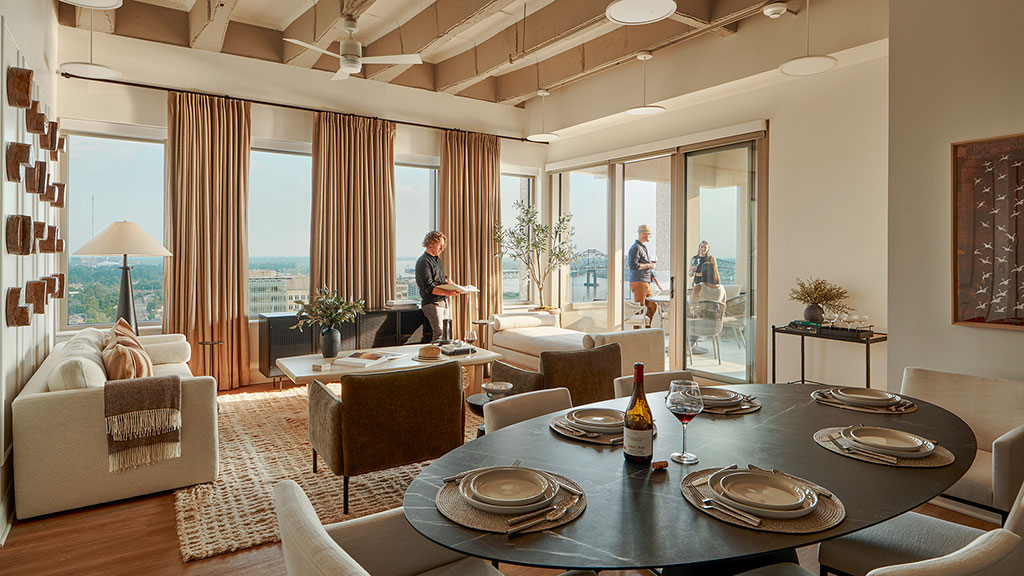The Future of Receiving Healthcare at Home
January 29, 2024 | By Bonny Slater and Nicolas Swaner
It’s no secret the healthcare landscape is in dire need of transformation. Picking up the pieces left by a pandemic, preparing for climate disasters, addressing the growing needs of aging populations, and confronting health equity gaps have placed health systems under immense pressure to provide high-quality care — all while facing financial and staffing crises. Add in a national rise in chronic diseases and exponential advances in medicine and technology, and the current landscape is rapidly shifting while health systems are falling behind.
The beauty of being at this inflection point is the opportunity for a health renaissance, one that brings a new perspective to healthcare and empowers consumers to decide where and how they receive care. With all the challenges health systems are facing, we believe the future of health is not a hospital or singular facility, but an integrated ecosystem of communities, organizations, professionals, and supportive infrastructure built around health and care.
This new vision not only seeks to reduce financial and staffing pressures on hospitals, but also to improve community health by addressing socioeconomic, environmental, and behavioral influences as significant contributing factors to overall health. Redefining the physical distribution of care and services allows a person to receive their correct level of care within the appropriate settings, at the appropriate timing, and by the professional appropriate for the level of care provided. One place of care that will provide more and more services within the near future is the home.
The goal of receiving healthcare within the home environment is to provide convenient access, lower costs, improve overall health, and provide an exceptional and comfortable experience. Driven by consumer demand and a shifting healthcare landscape, three main characteristics set up the framework for the future of receiving healthcare at home: embracing technology, designing with wellness, and establishing equitable care.

Embracing Technology to Enhance Experience
The home environment of the future will rely heavily on technology to provide personalized care and better experiences. As hospitality and residential markets continue to blend, much can be learned from consumer demands. According to Gensler’s The Trends Shaping the Future of Hospitality, technology and AI are becoming increasingly important. Thought leaders within the hospitality sector suggest technology can be used to tailor more personalized and efficient patient experiences. As peoples’ health and life stages change overtime, they may require more assistance and medical interventions, and their homes should be designed to accommodate those needs.
With 69% of older adults wanting to stay within their current home as they age, it’s increasingly important to harness the power of technology to support residents’ health and demands. Built-in infrastructure like incorporated Wi-Fi, small UPS systems, and increased electrical capacity will allow for a wider array of health services to be provided at home. Additionally, AI will also play a crucial role in this regard, with smart home devices and virtual assistants helping with tasks such as medication and health management, telemetry, fall detection, and emergency response.
Designing With Wellness for Higher Quality Living
Designing wellness-prioritizing homes will have a positive impact on residents’ overall health and wellness. According to Gensler’s Residential Experience Index, residents value elements that drive positive living experiences, such as natural light, fresh air, and access to the outdoors. A healthy home is not only one that supports receiving healthcare but can also mitigate negative health conditions altogether by providing comfortable and safe environments. For example, smart home devices can help monitor and regulate indoor air and water quality, something essential for maintaining good health by eliminating pollutants. Additionally, residents have rediscovered the value of mental health and spending time in nature. Features such as outdoor terraces, large windows, and eye-catching views are less of a feature and more of a requirement.
With over 60% of our lives spent in our homes, the future home will also place a greater emphasis on the building materials we come into contact with every day. Prioritizing finishes that are VOC-free and easy to clean, the home environment will feature interventions that safeguard residents’ overall health and comfort. Addressing many of the health risk factors associated with health outcomes, the design of the home environment focuses on preventive care by providing higher quality living and an enriched experience.
Establishing Equitable Care at Home and Within the Community
Within the current healthcare landscape, significant historic health equity gaps continue to affect minorities and disadvantaged communities. Systemic racism has stunted their care access and directly harmed the socioeconomic and environmental foundation of many communities. These factors can make up 50% of health outcomes for individuals. According to Gensler’s Building Trust: Black Experiences in Healthcare report, Black Americans experience disproportionally worse health outcomes compared to non-Black Americans, including increased mortality rates for Black women and disparities in life expectancy of over 20 years. To address these discrepancies, equitability must be established both within the home and beyond into the greater community.
Bringing healthcare into, or closer to, the home environment allows for convenient access and can lower overall costs for both patients and health systems. This strategy alone is not enough to establish equitable care, yet the true strategy to combat equity gaps lies within building trust and creating familiar partnerships with community providers and leaders. Programs like DignityMoves out of California focus on providing housing to address the state’s homelessness crisis. Other program partnerships such as SOME (So Others Might Eat) at The Conway Center and Unity Health Care in Washington, D.C. provide access to healthy foods, nutritional education, housing, and healthcare for underserved families. These types of programs are run by the community for the community, establishing a strong foundation of wellness and connection.
In concert, these characteristics work to create a redefined image of the home environment and its interaction with health and care. With a new vision for the healthcare landscape, the home will begin to be one of many spaces people can expect to receive high-quality care.
For media inquiries, email .


